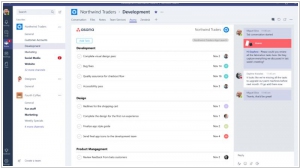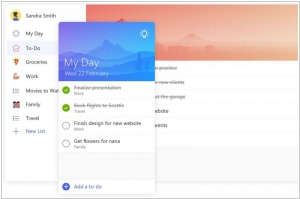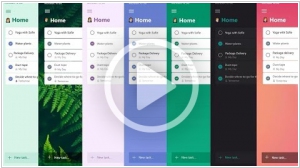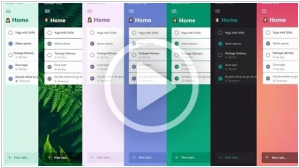Asana vs Microsoft To-Do
September 11, 2023 | Author: Adam Levine
Asana and Microsoft To-Do are task management tools that cater to different scales of organizational needs. Asana, with its robust features and project management capabilities, is a powerful choice for teams and businesses looking to coordinate complex workflows, track progress, and collaborate on projects with multiple stakeholders. It excels at providing a comprehensive platform for task delegation, timeline management, and cross-functional communication. In contrast, Microsoft To-Do is a more streamlined and user-friendly task list app, ideal for individuals and smaller teams seeking a straightforward way to organize and prioritize daily tasks and assignments.
See also: Top 10 Productivity software
See also: Top 10 Productivity software
Asana vs Microsoft To-Do in our news:
2023. Asana launches new work intelligence tools with AI on the way
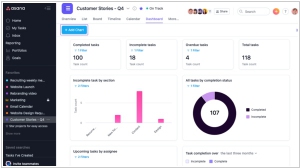
Asana has announced a new set of dashboards to give managers the data they need to make sure projects are staying on budget and meeting goals. This involves providing a single view of strategic initiatives, team capacity and budgets. It builds on the graph model that underlies the entire Asana platform, but the company is working to bring artificial intelligence to the process to make it even smarter. The next step will be using AI to generate the portfolios of the things that you care about instantaneously. So having them become smarter and smarter, but the fact that they can be at any level across an entire organization, that is part of this new launch
2019. Microsoft is finally shutting down to-do list app Wunderlist
For years, Microsoft has assured users that it would eventually discontinue the Wunderlist to-do list app, which it acquired in 2015, in favor of its own app, To Do. Microsoft aimed to offer a competitive experience that encompassed the best features of Wunderlist. Finally, Microsoft has announced that Wunderlist will be officially shut down on May 6, 2020. Following this date, Wunderlist to-dos will no longer synchronize, but users will still have the option to import their content into Microsoft's own To Do app.
2019. Microsoft integrated its personal organizer app To-Do with Outlook
Microsoft has recently unveiled an updated version of its Microsoft To-Do personal organizer. This new release introduces a range of exciting features, including the ability to fully customize the color scheme and background. Additionally, users now have the option to enable 2-factor authorization for enhanced security. The updated Microsoft To-Do also offers smart recommendations to help users create their task lists for the day efficiently. Furthermore, the integration with Outlook has been seamlessly implemented, allowing the Flagged Email list in the app to display flagged messages from Outlook.com. The integration extends further to include Microsoft Planner, a project management service, as well as voice assistants Alexa and Cortana. Notably, Microsoft hinted at the potential closure of Wunderlist, a service acquired by Microsoft four years ago, which served as the foundation for the development of Microsoft To-Do. Following this, the founder of Wunderlist, Christian Reber, publicly expressed his desire for Microsoft to repurchase the service and transform it into an open-source product via a tweet.
2019. Microsoft brought its To-Do app to Mac
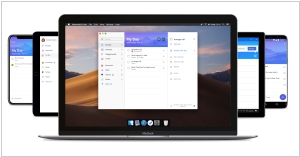
Microsoft has expanded the availability of its To-Do app to include the Mac platform. The Mac version will provide immediate support for most core features, enabling users to create and manage tasks, work offline, share lists, utilize tags, and more. Additionally, the app will integrate with Microsoft Outlook, allowing users to import their "Flagged" email list. Integration with Planner is also on the horizon, enabling users to access items assigned to them. Taking advantage of the Mac platform, the To-Do app offers a range of convenient keyboard shortcuts, such as ⌘2 to minimize the app for a list view and ⌘1 to return to the complete list display. Users can even edit task text directly from the list view by clicking on it.
2018. Work management software provider Asana gets $50M
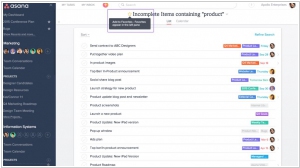
Asana, a platform utilized by teams and individuals to plan and monitor work projects, has secured an additional $50 million in funding, resulting in a valuation of $1.5 billion. The funding will be allocated towards international expansion and product enhancement. Asana has been actively focusing on global growth, with half of its new sales already originating from outside the United States. The company aims to further extend its product offerings while approaching profitability. As part of its expansion strategy, Asana plans to establish an AWS-based data center in Frankfurt within the first half of the upcoming year. Additionally, it intends to establish a stronger presence in the Asia-Pacific region, with new offices in Sydney and Tokyo, along with ongoing recruitment efforts in both markets. Asana's customer base spans across 195 countries and supports six languages. The company's decision to concentrate on these two regions stems from the significant traction it has observed in those areas.
2018. Asana launched $19.99 Business tier to help managers handle multiple projects
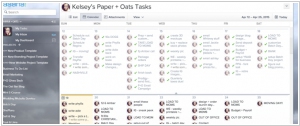
Project management service Asana is introducing a new tier called Asana Business, tailored for enterprises that handle multiple projects. Priced at $19.95 per user per month, this offering is specifically designed to support teams with managers or executives overseeing numerous projects simultaneously, which can sometimes reach thousands within a single organization. Asana Business provides additional features to aid designated individuals in effectively managing and prioritizing their workload. This emphasis on executives and managers aligns with Asana's broader vision of its role within the spectrum of productivity tools used by businesses. Alongside efficient storage solutions like Dropbox or Box and communication platforms such as Slack, Workplace, and Teams, Asana aims to establish its place as a comprehensive tool for enhancing organizational productivity.
2018. Asana adds AI-powered interactive project maps
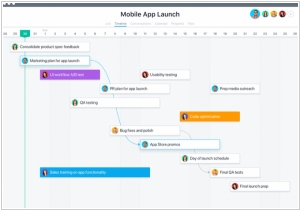
Workflow management platform Asana has introduced a new feature called Timeline, offering composite, visual, and interactive maps that illustrate the progress of various projects assigned to team members. This feature provides teams with a broader perspective on their collective workload and visualizes how projects interconnect in a timeline format. Timeline proves valuable in scenarios such as product launches, marketing campaigns, and event planning. Importantly, it does not require duplicating work or using separate software; instead, each project automatically becomes a distinct segment on the team's Timeline. It's worth noting that Timeline is exclusively available to paying users, while free users among Asana's extensive user base will need to upgrade to the premium tier to access this feature.
2018. Asana raised another $75M
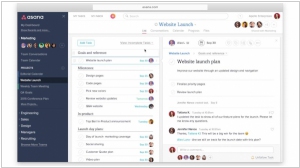
Asana, the renowned productivity and collaboration service, has secured a significant $75 million investment in its Series D funding round. In a blog post, Asana highlighted that 45 percent of its 30,000 paying customers are located outside of the United States. Among its notable clientele are prominent names like Tesco, Sky, Danone, Chanel, and Spotify. With this global reach in mind, Asana has announced its plans to introduce Spanish, Portuguese, and Japanese versions of its service, following the recent rollout of support for French and German. Including this latest funding, Asana has now successfully raised a total of $168 million from investors. Business Insider reported that the startup's current valuation stands at an impressive $900 million.
2017. Microsoft unveiled productivity app To-Do that will replace Wunderlist
In 2015, Microsoft acquired the well-liked mobile to-do list app Wunderlist. Now, the company is preparing users for the app's eventual discontinuation by introducing a new application called To-Do. Developed by the same team responsible for Wunderlist, this new app will gradually incorporate the beloved features of its predecessor in the coming months. Microsoft has assured users that it will not shut down Wunderlist until it has successfully integrated the best aspects of the app into To-Do. During this transition period, Microsoft is encouraging Wunderlist users to switch to To-Do by providing an importer tool. This tool allows users to seamlessly transfer their lists and to-dos from Wunderlist to To-Do. Once transferred, these items will be accessible in other Microsoft products such as Exchange and Outlook. However, it's important to note that the To-Do app is not yet fully equipped to cater to all Wunderlist users. Currently, platforms like Mac, iPad, and Android tablet do not support To-Do, and task list sharing is also unavailable.
2016. Asana added Custom fields
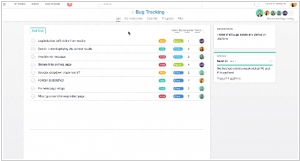
Task management app Asana is introducing a new feature called custom fields, which allows users to customize the information management system within Asana to accommodate various structured data points. With custom fields, companies can tailor Asana to their specific needs. For instance, a company conducting a recruitment drive can create a form within Asana to track additional details about candidates. Marketing teams can delve into larger plans and monitor specific campaigns, while engineering teams can utilize custom fields for bug tracking. Design teams can leverage this feature to provide more comprehensive insights and updates on major projects. Furthermore, Asana will integrate custom fields into its API, enabling users to explore new applications and utilize Asana as a customer-facing tool to efficiently gather and structure information in real time.

